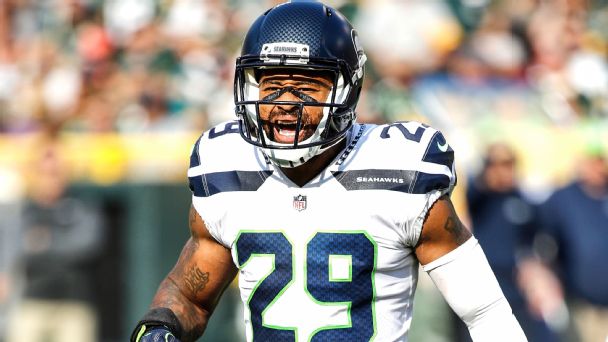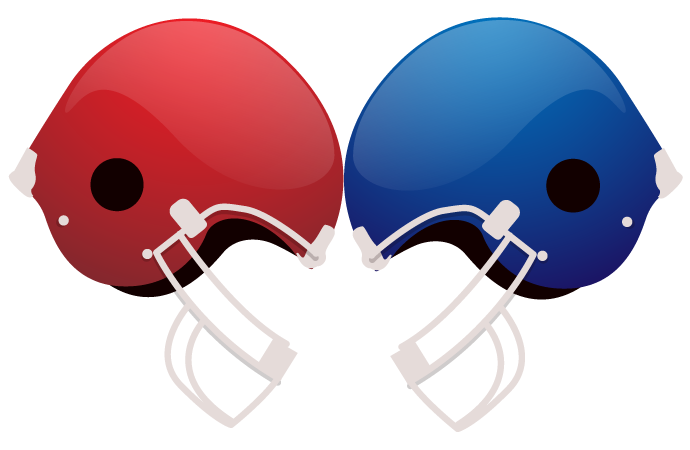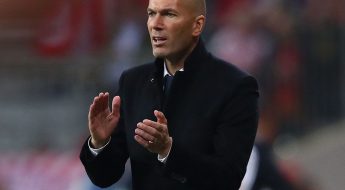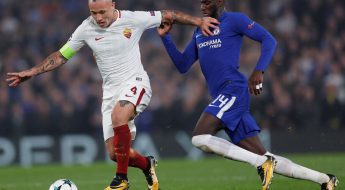'Watch out' if Myles Garrett stays healthy in second season

BEREA, Ohio — The Cleveland Browns have big expectations for Myles Garrett, which is just fine with the No. 1 pick of the 2017 draft.
Garrett has big expectations for himself.

“Ten times better (than 2017), 15 times better,” Garrett said with a smile at the team’s golf outing about how much he can improve.
For the record, he was joking about the degree, but Garrett wasn’t joking about expecting a better season. To do that, though, he has to meet the key goal he set for himself after his rookie season: Stay healthy.
“The best quality is availability,” Garrett said during minicamp. “I have to be present.”
It wasn’t Garrett’s fault that he missed five games as a rookie. He hurt his ankle in practice before the opener when a teammate fell on him and caused him to miss four games. He missed the Browns’ trip to London because of a concussion.
But Garrett felt those five missed games plus the time it took to get back to playing shape limited his impact. Even with those, though, he had seven sacks in 11 starts. Projected to a full season, that’s 10 sacks, and a double-digit sack season from a rookie would draw a lot of attention.
But the Browns didn’t draft Garrett first overall a year ago to be very good, and they’ve let Garrett know that.
General manager John Dorsey showed Garrett tape of how Julius Peppers became dominant. Peppers, Dorsey feels, has a similar body size and approach as Garrett. Peppers has never been flashy or into showmanship; he’s just a professional who’s been outstanding. Which is the same approach Garrett takes.
“I think that is the challenge maybe John was serving up, and it is no different a challenge than if I would go to Myles,” coach Hue Jackson said. “‘You are supposed to be one of the best players in this league. Go be it every week.'”
Jackson agreed that staying healthy is the first key for Garrett, which in some degree involves not overdoing it off the field.
“He is one of the few guys that I have had to coach that I know I am going to have to keep my hand on to hold back,” defensive coordinator Gregg Williams said. “One of the things with him is his overworking. He works so hard because he does not want to be good; he wants to be great.
“Sometimes he can be his own worst enemy in that respect because he works so hard physically that he has to do a good job with recovery also. The next thing is this — and he knows — if he stays healthy, watch out.”
Garrett’s conditioning has become legendary since he joined the Browns. A year ago he ended training camp practices with a series of 100-yard sprints. This offseason when Garrett ran sprints, Williams said he ran with the defensive backs and receivers.
“They were having a hard time keeping up,” Williams said. “How do you do that as a 280-pound man?”
Another measure of Garrett’s growth is in his knowledge of the game. He admitted that it was an adjustment getting used to the speed of the NFL game.
“It is coming a lot easier,” he said.
A year ago at this time Garrett was coming off a few months of training for the draft, which meant training for the 40-yard dash. This offseason he trained for playing football, which meant concentrating on technique and skills.
“I feel like I was just a little slow with my hands and not as good as I wanted to be last year with disengaging with the offensive linemen,” he said. “I think that I have really improved.”
He also will be reunited with his partner at defensive end. Emmanuel Ogbah returned from a foot injury that sidelined him for six games, and he looked strong and powerful. Garrett and Ogbah already have developed a bond, to the point that Garrett balked at the possible drafting of Bradley Chubb because he felt he and Ogbah could be special.
The final factor that the Browns feel will help Garrett: a revamped secondary.
The Browns’ self-scouting from last season showed a secondary that could not play press coverage or run with NFL receivers. Changes were made. Jabrill Peppers was moved from free safety to play closer to the line. Damarious Randall was acquired via trade to play free safety. Denzel Ward was drafted fourth overall to provide press coverage. Three other free-agent corners were signed. Peppers is the lone holdover, and he won’t be in the same position.
In theory this means coverage in the secondary should be better, which means the “almost sacks” that Garrett had a year ago will turn into sacks. The Browns believe Garrett was one step from at least a dozen more sacks, perhaps as many as 15-18.
“Allow the quarterback to hold the ball longer than 2.13 seconds, now watch,” Williams said, evidently referring to how quickly opposing quarterbacks got rid of the ball in 2017.
If that was the Browns’ number, it’s shocking. NextGenStats.com tracks the time individual quarterbacks take to throw. None of the 42 quarterbacks it ranked were faster than 2.42 seconds.
ESPN Stats & Information also keeps track of the time it takes quarterbacks to throw against defensive teams. Quarterbacks on teams playing the Browns got rid of the ball in 2.36 seconds, second fastest in the league, according to ESPN Stats. The NFL average: 2.54.
Gauging this stat could be subjective, though. One site’s measurements could differ from another’s, which could differ from a team’s. Suffice it to say that all the stats reflect opposing receivers getting open without much initial opposition, which limits the time the pass rush can get to the quarterback. If the secondary can maintain coverage another second or two, the pass rush becomes that more effective.
But Garrett’s rookie season was not bad by any means, and by some measures, it was excellent. ProFootballFocus actually called him “dominant” when he was on the field. Among the PFF numbers:
-
37 pressures in 300 passing snaps
-
A sack or hit on 48.6 percent of his pressures, tied for fourth highest among edge defenders (250 snap minimum)
-
An overall grade of 88.4, 11th among edge defenders
-
Multiple pressures in every game he played, with at least three pressures in nine games and one quarterback knockdown in all but one game
PFF called Garrett the best rookie edge defender in the league in 2017 by a healthy margin, and the highest-graded edge defender overall in the AFC North.
It’s not unreasonable to ask: If Garrett did that as a rookie, if he could hit the quarterback on just about 50 percent of his pass rushes when he had injury issues, what might he be able to do in his second season, healthier, with a better knowledge of the game, and with more help around him?





